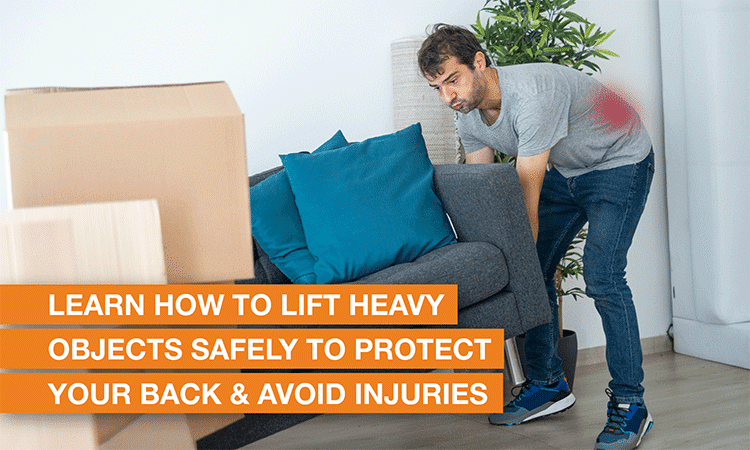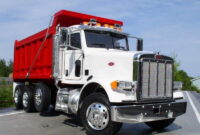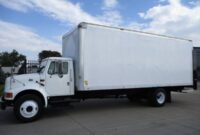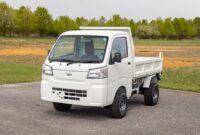Heavy Duty Seat Covers For Trucks: The Ultimate Guide to Protecting Your Ride pickup.truckstrend.com
Your truck is more than just a vehicle; for many, it’s a mobile office, a family transporter, an adventure companion, or a rugged workhorse. It endures daily wear and tear, from muddy boots and spilled coffee to pet hair and sharp tools. While the exterior might take the brunt of the elements, your truck’s interior, particularly its seats, are constantly exposed to potential damage. This is where heavy-duty seat covers for trucks come into play, serving as an essential shield against the rigors of your lifestyle. Far beyond mere aesthetics, these robust covers are designed to offer superior protection, extend the life of your original upholstery, and even enhance your driving experience. Investing in them is not just about keeping your seats clean; it’s about preserving your truck’s value, maintaining its comfort, and ensuring it stands up to whatever you throw at it, day in and day out.
This comprehensive guide will delve into every aspect of heavy-duty truck seat covers, exploring why they are a crucial investment, what features to prioritize, the different materials available, and how to choose and maintain the perfect set for your vehicle and lifestyle.
Heavy Duty Seat Covers For Trucks: The Ultimate Guide to Protecting Your Ride
Why Invest in Heavy-Duty Seat Covers? Unpacking the Benefits
The decision to purchase heavy-duty seat covers goes beyond simple upkeep; it’s a strategic investment in your truck’s longevity and your comfort. Here’s a breakdown of the compelling benefits:
- Unparalleled Protection Against Wear and Tear: Original upholstery, especially in work trucks or those frequently used for outdoor activities, can quickly succumb to rips, tears, scuffs, and fading. Heavy-duty covers act as a formidable barrier against sharp objects, abrasive materials, and the constant friction of getting in and out.
- Defense Against Spills and Stains: From coffee spills and fast-food mishaps to muddy paws and oil stains, truck interiors are prime targets for spills. Most heavy-duty covers are water-resistant or waterproof, preventing liquids from seeping into the original fabric, making cleanup a breeze and eliminating lingering odors.
- Preserving Resale Value: The condition of a vehicle’s interior significantly impacts its resale value. Pristine, protected seats can command a higher price and make your truck more appealing to potential buyers down the line. It’s a proactive measure that pays off.
- Enhanced Comfort and Aesthetics: While protection is primary, many heavy-duty materials offer an added layer of cushioning, improving comfort on long drives. Furthermore, they can instantly refresh a worn interior or personalize your truck’s look to match your style or brand.
- UV Protection: Constant exposure to sunlight can fade and crack original upholstery over time. Quality heavy-duty seat covers often come with UV resistance, safeguarding your seats from sun damage and maintaining their original color and texture.
- Easy Maintenance: Unlike original upholstery that might require professional cleaning, most heavy-duty covers are designed for easy cleaning. A simple wipe-down, vacuum, or even machine wash (depending on the material) is often all that’s needed to keep them looking new.

Key Features to Look For in Heavy-Duty Seat Covers
Not all heavy-duty seat covers are created equal. To make an informed choice, consider these essential features:
- Material Durability and Properties: This is paramount. Look for materials known for their strength, tear resistance, and specific properties (e.g., waterproof, breathable, easy-clean).
- Fit Type (Custom vs. Semi-Custom vs. Universal):
- Custom-Fit: Engineered precisely for your truck’s make, model, and year, these offer the best fit, resembling original upholstery. They accommodate all contours, headrests, armrests, and seat controls perfectly.
- Semi-Custom: Designed for a range of similar vehicle models, providing a good fit but not as tailored as custom options.
- Universal: The most affordable, but often a loose or ill-fitting solution. Best for basic, temporary protection.

- Water Resistance/Waterproof Capabilities: Essential for protecting against spills, mud, and moisture. "Water-resistant" repels light spills, while "waterproof" offers complete protection against saturation.
- Airbag Compatibility: A non-negotiable safety feature. Modern trucks have airbags integrated into the seats. Ensure the seat covers are designed with specific cutouts or tear-away seams to allow airbags to deploy unimpeded. Look for "airbag compatible" labeling.
- UV Protection: Important for preventing fading and degradation of both the cover and the underlying upholstery due to sun exposure.
- Ease of Cleaning: For heavy-duty use, covers that can be easily wiped down, hosed off, or machine washed will save you time and effort.
- Installation Method: Some covers are easier to install than others. Look for clear instructions and a secure fastening system (straps, buckles, elastic).
- Warranty: A good warranty indicates the manufacturer’s confidence in their product’s durability and quality.

Types of Heavy-Duty Seat Cover Materials Explained
The material is the heart of a heavy-duty seat cover, dictating its protective qualities, feel, and price point.
- Ballistic Nylon:
- Pros: Extremely rugged, highly resistant to tears, abrasions, and punctures. Often water-resistant and easy to clean. Ideal for construction, tools, and heavy use.
- Cons: Can be less breathable, might feel stiff initially.
- Cordura Fabric:
- Pros: Similar to ballistic nylon, known for exceptional abrasion resistance and durability. Often used in military and outdoor gear. Water-resistant and tough.
- Cons: Can also be less breathable and somewhat stiff.
- Neoprene/Neosupreme:
- Neoprene (wet suit material):
- Pros: Fully waterproof, excellent for wet environments (swimmers, surfers, fishermen, muddy conditions). Offers a comfortable, cushioned feel.
- Cons: Can be hot in warm climates, more expensive, and may develop a distinct odor initially.
- Neosupreme (synthetic neoprene):
- Pros: More affordable alternative to true neoprene, offers good water resistance and similar comfort.
- Cons: Not fully waterproof, may not be as durable as genuine neoprene.
- Neoprene (wet suit material):
- Canvas:
- Pros: Breathable, durable, and has a classic, rugged aesthetic. Good for dirt, grime, and pet hair, as it’s easy to vacuum or brush off. Often machine washable.
- Cons: Not inherently waterproof (though some are treated), can absorb liquids if not treated.
- Heavy-Duty Vinyl/Leatherette:
- Pros: Very easy to clean with a simple wipe-down, highly water-resistant, and offers a professional, sleek look.
- Cons: Can get very hot in summer and cold in winter. Less breathable than fabric options, can feel sticky. Prone to cracking over time if exposed to extreme temperatures or UV without proper care.
Installation Guide: Getting Your Covers On Right
Proper installation is crucial for maximizing the effectiveness and lifespan of your heavy-duty seat covers. While specific steps vary by manufacturer and fit type, here’s a general guide:
- Prepare Your Seats: Thoroughly clean your truck’s original seats. Vacuum any debris, wipe down surfaces, and allow them to dry completely. This prevents dirt from being trapped underneath and ensures a better fit.
- Remove Headrests: Most seat covers require you to remove the headrests first. Press the release buttons or clips at the base of the headrest posts and pull them straight up.
- Install Seat Back Covers: Start with the seat back. Slide the cover over the top of the seat, working it down evenly. Ensure any openings for seatbelts or side airbags are correctly aligned.
- Install Seat Base Covers: Next, slide the cover over the seat base. For custom-fit covers, this often involves tucking fabric into the seat crease or around the seat frame.
- Secure Fasteners: Heavy-duty covers typically come with various straps, buckles, elastic bands, or hook-and-loop fasteners. Route these underneath the seat and through gaps to secure the cover tightly. Pull straps snugly to eliminate wrinkles and ensure a tight, custom-like fit.
- Reinstall Headrests: Once the main covers are secure, reinstall the headrests, often sliding them through designated openings in the cover. Some sets include separate headrest covers.
- Check for Airbag Compatibility: Double-check that any side airbag seams or cutouts are not obstructed.
- Final Adjustments: Smooth out any remaining wrinkles and ensure all edges are tucked in for a clean, professional look.
Tip: For custom-fit covers, it helps to read the manufacturer’s instructions before you start. Some materials, like Neoprene, can be a tight fit and might require a bit more effort. Working in warmer temperatures can make the material more pliable.
Maintenance and Care Tips for Longevity
Even heavy-duty covers benefit from regular care to extend their lifespan and keep them looking great.
- Regular Vacuuming/Brushing: For fabric covers, frequently vacuum or brush off dirt, dust, and pet hair to prevent it from embedding.
- Spot Cleaning: Address spills immediately. For most materials, a damp cloth with mild soap and water is effective. Blot, don’t rub, to avoid spreading the stain.
- Deep Cleaning (as per material):
- Ballistic Nylon/Cordura/Canvas: Many are machine washable on a gentle cycle with cold water and mild detergent. Always air dry.
- Neoprene/Neosupreme: Hand wash with mild soap and water, or hose off. Air dry completely. Avoid machine washing or drying, as it can damage the material.
- Vinyl/Leatherette: Simply wipe down with a damp cloth and mild cleaner. Avoid abrasive cleaners or brushes.
- Avoid Harsh Chemicals: Bleach, strong solvents, and abrasive cleaners can damage the material and coatings. Stick to mild, pH-neutral cleaners.
- Air Drying is Best: Always air dry your seat covers completely before reinstalling them to prevent mildew and odors. Avoid direct sunlight for extended periods during drying, especially for Neoprene/Neosupreme, to prevent material degradation.
- UV Protectant (for Vinyl/Leatherette): Consider using a UV protectant spray specifically designed for vinyl to prevent cracking and fading over time.
Choosing the Right Seat Covers for Your Lifestyle
Your daily activities and how you use your truck should heavily influence your choice of seat covers.
- The Tradesman/Construction Worker: Prioritize extreme durability, tear resistance, and easy clean-up. Ballistic Nylon, Cordura, or heavy-duty Vinyl are excellent choices to withstand tools, dirt, and constant entry/exit.
- The Outdoor Enthusiast (Hunter, Fisherman, Hiker): Focus on waterproof or highly water-resistant materials that can handle mud, water, and odors. Neoprene or treated Canvas are ideal for protecting against wet gear and dirty boots.
- The Pet Owner: Look for scratch-resistant materials that are easy to vacuum or wipe clean of fur and dander. Canvas, Ballistic Nylon, or even Vinyl work well, especially if paired with a good pet barrier.
- The Family Hauler: Seek out spill-proof, comfortable, and easy-to-clean options. Neosupreme or treated Canvas can protect against kid-related messes while offering a pleasant ride.
- The Everyday Commuter: While protection is still key, comfort and aesthetics might rank higher. Neosupreme or high-quality Canvas can offer a good balance of protection, comfort, and style.
Practical Advice and Actionable Insights
- Measure Twice, Order Once: If not opting for a custom-fit, always measure your seats and compare them to the product dimensions.
- Read Reviews: Look for reviews from other truck owners, especially those with your specific make and model. Pay attention to comments on fit, durability, and ease of installation.
- Budget vs. Quality: While universal covers are cheap, they often disappoint in fit and durability. Investing a bit more in semi-custom or custom-fit covers made from quality materials will pay off in the long run.
- Airbag Compatibility is Non-Negotiable: Never compromise on safety. Ensure the covers are explicitly labeled as airbag compatible for your truck’s specific seat airbag locations.
- Shop Reputable Brands: Stick with well-known manufacturers who specialize in automotive accessories. They often offer better quality, support, and warranties.
Estimated Price Guide for Heavy Duty Seat Covers For Trucks
Please note: Prices are highly variable based on brand, specific vehicle model, material thickness, and retail outlet. The ranges below are estimates for a full set of front and rear heavy-duty seat covers.
| Material Type | Fit Type | Key Features | Estimated Price Range (USD) |
|---|---|---|---|
| Universal Canvas | Universal | Basic protection, breathable, dirt/pet hair friendly | $50 – $150 |
| Universal Vinyl | Universal | Basic protection, easy wipe-clean, water-resistant | $40 – $120 |
| Neosupreme | Semi-Custom | Good water resistance, comfortable, good fit | $150 – $300 |
| Canvas (Treated) | Semi-Custom/Custom | Durable, breathable, water-resistant, classic look | $180 – $400 |
| Ballistic Nylon | Semi-Custom/Custom | Extreme durability, tear/abrasion resistant, tough | $200 – $500 |
| Cordura Fabric | Semi-Custom/Custom | Military-grade durability, abrasion resistant | $250 – $600 |
| Neoprene (True) | Custom | Waterproof, cushioned, excellent for wet conditions | $300 – $700+ |
| Heavy-Duty Vinyl | Custom | Professional look, waterproof, very easy to clean | $250 – $550 |
Prices are for a complete set (front and rear rows, if applicable). Individual row prices will be lower.
Frequently Asked Questions (FAQ)
Q1: Are heavy-duty seat covers truly universal, or should I get custom-fit?
A1: While "universal" covers exist, they rarely provide a snug or aesthetically pleasing fit. For true heavy-duty protection and a tailored look, custom-fit or semi-custom covers are highly recommended. They are designed specifically for your truck’s seat dimensions and features.
Q2: How do I know if the seat covers are airbag compatible?
A2: Always look for explicit labeling from the manufacturer stating "airbag compatible" or "SRS compatible." These covers feature special seams or cutouts that allow side airbags (if your truck has them in the seats) to deploy safely. Never use covers that obstruct airbag deployment.
Q3: Can I install heavy-duty seat covers myself, or do I need professional help?
A3: Most heavy-duty seat covers are designed for DIY installation. While some custom-fit sets might be snug and require a bit more effort, following the manufacturer’s instructions step-by-step should allow you to install them successfully.
Q4: How long do heavy-duty seat covers typically last?
A4: The lifespan varies greatly depending on the material, quality of construction, frequency of use, and how well they are maintained. High-quality Ballistic Nylon, Cordura, or Neoprene covers can last anywhere from 5 to 10+ years with proper care, enduring significant abuse.
Q5: Are heavy-duty seat covers comfortable for long drives?
A5: Yes, many heavy-duty materials, especially Neoprene, Neosupreme, and some treated Canvas, offer a comfortable feel. While materials like Ballistic Nylon are rugged, they might initially feel stiffer. The key is to choose a material that balances protection with your comfort preferences.
Q6: Do these covers protect against UV damage and fading?
A6: Many quality heavy-duty seat covers are treated to resist UV rays, which helps prevent fading and cracking of both the cover itself and the original upholstery underneath. Always check the product specifications for UV resistance.
Q7: What’s the main difference between Neoprene and Neosupreme?
A7: Neoprene is the genuine, waterproof wetsuit material, offering superior water protection and cushioning. Neosupreme is a synthetic blend designed to mimic Neoprene’s look and feel at a lower cost. It offers good water resistance but is typically not fully waterproof and may not be as durable as true Neoprene.
Conclusion
Heavy-duty seat covers for trucks are more than just an accessory; they are a critical component for anyone serious about preserving their truck’s interior. From protecting against the daily grind of work and the adventurous spills of the outdoors to safeguarding resale value and enhancing comfort, the benefits are undeniable. By understanding the different materials, features, and installation nuances, you can confidently select the perfect set that aligns with your lifestyle and provides robust, long-lasting protection. Investing in quality heavy-duty seat covers is an investment in your truck’s future, ensuring it remains a comfortable, clean, and valuable asset for years to come, no matter where the road (or off-road) takes you.



